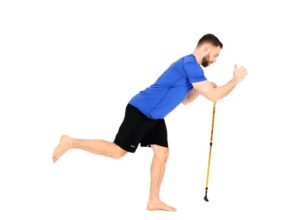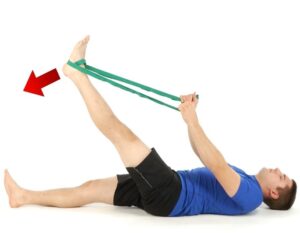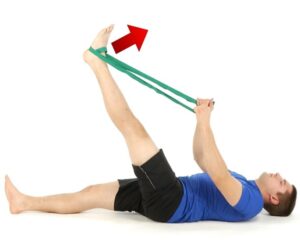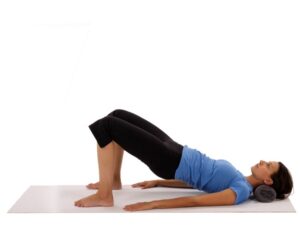Marathon Running: 4 EXERCISEs TO reduce your lower back pain
Training for and running a marathon is a huge achievement, however, it puts a lot of stress on the body. Hopefully, you have been following a running or training plan and have successfully got to the point of being able to run a Marathon, but you may have picked up a few niggles here and there along the way.
It is important to keep your lower back in condition whilst training for and running a marathon. So much movement and strength can come from the lower back and core, and if these areas are causing you issues in any way or aren’t as robust as they should be, then it might mean that your gait and running style is affected and not as efficient as it could be, and you could pick up niggles further down the chain. It is also handy to address any issues elsewhere in the body as that also could affect the lower back.
So, alongside your running training it would be beneficial to incorporate a mixture of strength and mobility exercises for your lower back. These can be done at any point in your training plan and can be used as both managing and preventing lower back pain. Remember, prevention is better than cure!
EXERCISE 1: RUNNING MAN
 The first exercise is what we call “Running Man”. This is particularly effective as it is so specific and functional to any kind of running training and marathon training.
The first exercise is what we call “Running Man”. This is particularly effective as it is so specific and functional to any kind of running training and marathon training.
This exercise is very effective as it is a fairly low-level exercise but involves the use of lots of important muscles in the lower back and core, it also includes some single leg stability and proprioception use as well. This exercise can be made easier by adding support or assistance with a golf club/broom/stick, and it can be progressed accordingly with the use of a resistance band or handheld dumbbells. It also involves a hip hinge movement which is very beneficial for improving the strength of the lower back.
To do this exercise the starting position is standing on one leg with a dowel/stick/cane used for support on the same side. You then lift the other knee towards your chest and make sure your arms are in the corresponding runner’s position. In a slow motion, bring the raised leg back and down towards the ground without touching the ground with the toes. Be sure to bend your hips—not your back—as you reach backward with the moving leg. Continue to swing your arms in a running motion as you move your leg back and forth. This exercise can be done before a run, or as part of a strength and conditioning session in and around your training.
EXERCISE 2: KNEE ROCKS
 The second exercise, commonly known as “Knee Rocks” involves lumbar spine rotation; it mobilises the lumbar spine, improves range of movement and can help with pain and stiffness.
The second exercise, commonly known as “Knee Rocks” involves lumbar spine rotation; it mobilises the lumbar spine, improves range of movement and can help with pain and stiffness.
To do this exercise the starting position involves lying on your back with your knees bent. Keeping your knees together, lower them to the ground as far as you can on one side and maintain the stretch. Return to the neutral position and repeat on the other side. When you are doing it, try to not raise your shoulders off the bed/floor when you lower your knees.
Again, this exercise can be done before a run, after a run or during a strength and conditioning session. It is a very versatile exercise and can be progressed by adding opposite arm movements and dropping your arms at chest level to the opposite side. That can bring an additional thoracic spine rotation element and can provide further mobilising qualities to the exercise, therefore great for runners with any kind of back pain.
EXERCISE 3: HAMSTRING STRETCH

 The third exercise that can be great for runners, and specifically runners with back pain, is a hamstring stretch. The hamstrings actually play an important role in preventing back pain; if the hamstrings get overloaded during running, this can then increase pulling and load on the lower back via the kinetic chain and effect your pelvic posture.
The third exercise that can be great for runners, and specifically runners with back pain, is a hamstring stretch. The hamstrings actually play an important role in preventing back pain; if the hamstrings get overloaded during running, this can then increase pulling and load on the lower back via the kinetic chain and effect your pelvic posture.
There are many variations of hamstring stretches, both static and dynamic stretches are advised, as well as a RDL type exercise (Romanian Deadlift), as the eccentric part of the movement, or when you are lowering the weight is a great hamstring stretch.
An assisted PNF hamstring stretch can be particularly effective at stretching your hamstrings. To do this, start by lying face up with the leg to be stretched straight up—or as much as your flexibility allows it. Put a stretch rope/towel/resistance band around the arch of your foot—not the ball of your foot. Hold the band with straight arms. Lower the leg towards the floor against the resistance of your hands and rope, at 20% force and for 10 seconds. Bring the leg towards your head for 2 seconds. Repeat for 1 minute. This is best done before a running session.
EXERCISE 4: GLUTE BRIDGE
 Another good exercise for runners with back pain is a glute bridge. This exercise is an easy way to get the gluteals to start recruiting and engaging, keeping the glutes strong is important for preventing back pain, general running performance and important for general lower limb strength. This exercise can be progressed nicely with the use of a resistance band around the knees, or by stretching one of the legs out to incorporate a single leg element. The exercise can be done both before a run, or ideally during a strength and conditioning session.
Another good exercise for runners with back pain is a glute bridge. This exercise is an easy way to get the gluteals to start recruiting and engaging, keeping the glutes strong is important for preventing back pain, general running performance and important for general lower limb strength. This exercise can be progressed nicely with the use of a resistance band around the knees, or by stretching one of the legs out to incorporate a single leg element. The exercise can be done both before a run, or ideally during a strength and conditioning session.
To start this exercise, lie down on your back with knees bent and feet flat on the floor at hip-width. Put a towel or pillow under the neck. Your arms should be straight and next to your body. Push your feet in the ground and lift your hips toward the sky. You can maintain the position or repeat the movement while inhaling/exhaling. This can be done either for repetitions or for a certain amount of time, whatever is preferred.
HAPPY TRAINING!
These exercises are an easy and effective way to manage and prevent lower back pain, so will be great exercises for runners with back pain. Remember it is important to stretch before and after a run, implementing foam rolling would be useful too! But adding these specific exercises to your training routine and completing them 4 or 5 times a week will be a good way to keep your back healthy during your marathon training and running event!
If you’re struggling with an injury that’s stopping you getting back into exercise, call us on 0800 731 2738 or book online here.
If you need some help designing a program that will keep you exercising, get in touch at https://www.summitphysio.co.uk. We also offer Strength and Conditioning services, including bespoke training plans and 1 on 1 coaching.
For more free tips and information, make sure to follow our Facebook and Instagram pages. We also post client stories, so you can see how we’ve helped people get back to doing the things they enjoy!



